In 1963, Gibson added a new line of solidbody electrics, the four Firebirds, with strong links back to the Explorer design and an attempt to compete with Fender’s growing popularity among solidbody fans.
Gibson hired an outside designer, Ray Dietrich, who had worked in the car industry for 50 years, to concoct something new and remarkable, and the Firebirds took flight.
However, those "reverse" originals were shortlived, following manufacturing issues, and four revised “non-reverse” Firebirds appeared in ’65.
Gibson has offered several different reissues and remakes of Firebirds through the decades since they first appeared, and in this timeline we’ve detailed many of the most important, interesting, and unusual models and variations. (And as usual in these Timelines, we have omitted Custom Shop models.)
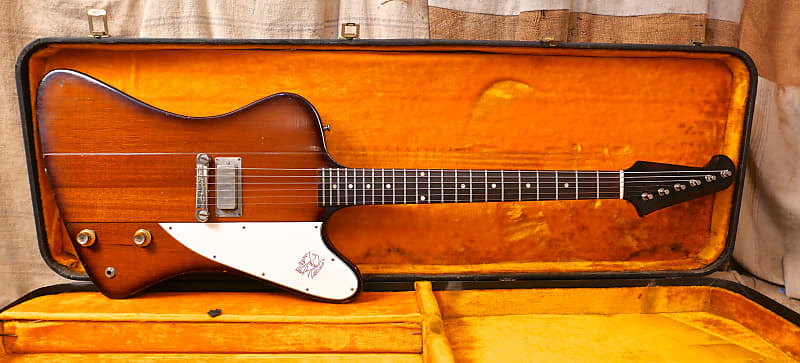
Gibson’s new solidbody series began with four models, the Firebird I, III, V, and VII, and the I, with one mini-humbucker and dot markers, was the least expensive: Reverse-shape mahogany body with nine-piece mahogany/walnut through-neck (some early versions with two-piece neck); unbound rosewood fingerboard with dot markers, 22 frets; headstock with up-pointing tip (some 1965 models with non-reverse-style head), banjo-style rear-facing tuners; one plain-cover mini-humbucker at bridge (Gibson's three types of mini-humbucker pickups, each slightly different, appeared on some Epiphones (early ’60s), on the Firebirds (starting ’63), and later on the Les Paul Deluxe (starting 1969); two knobs (volume, tone) and jack on body; white pickguard with red firebird logo (some early versions without logo); wrap-under bridge/tailpiece with integral saddles (some also with Vibrola flat-arm vibrato); three strap buttons.
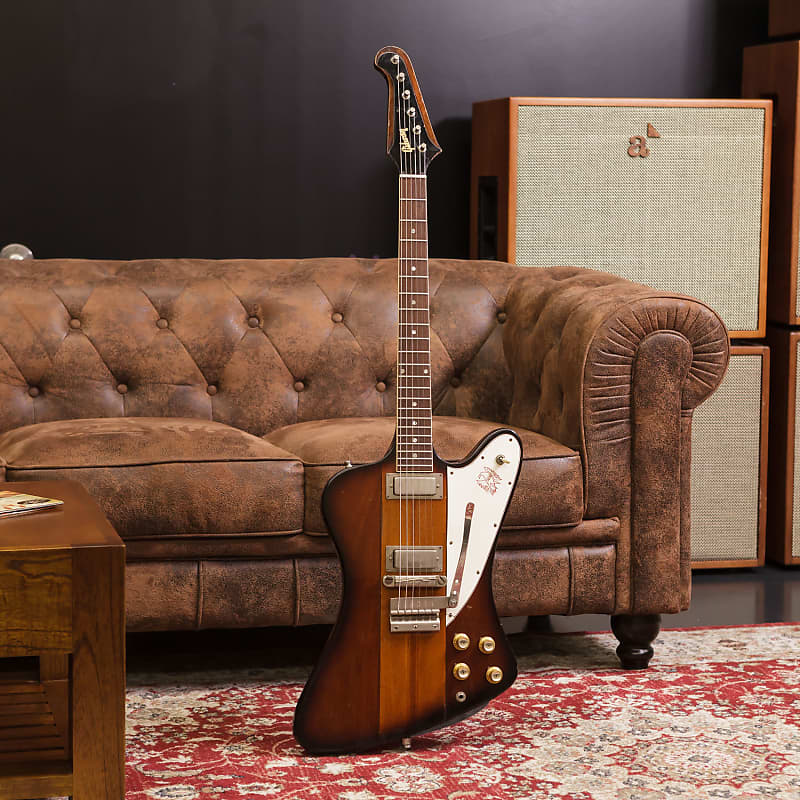
Similar to the reverse Firebird I, the reverse III had two mini-humbuckers and dot markers: Bound rosewood fingerboard with dot markers; some 1965 models with regular-style tuners; two mini-humbuckers; four knobs (volume and tone per pickup) and jack on body, regular three-way selector on pickguard; wrap-under bridge plus separate Vibrola flat-arm vibrato.
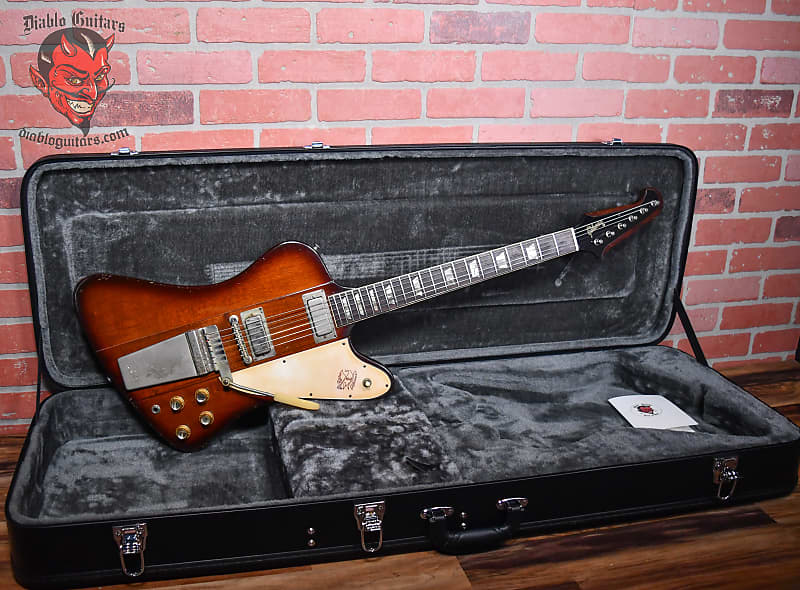
Similar to reverse Firebird I, the reverse V had two mini-humbuckers and crown markers: Bound rosewood fingerboard with crown markers; two mini-humbuckers; four knobs (volume and tone per pickup) and jack on body, regular three-way selector on pickguard; Tune-o-matic bridge plus separate lyre-logo Deluxe Vibrola tube-arm vibrato.
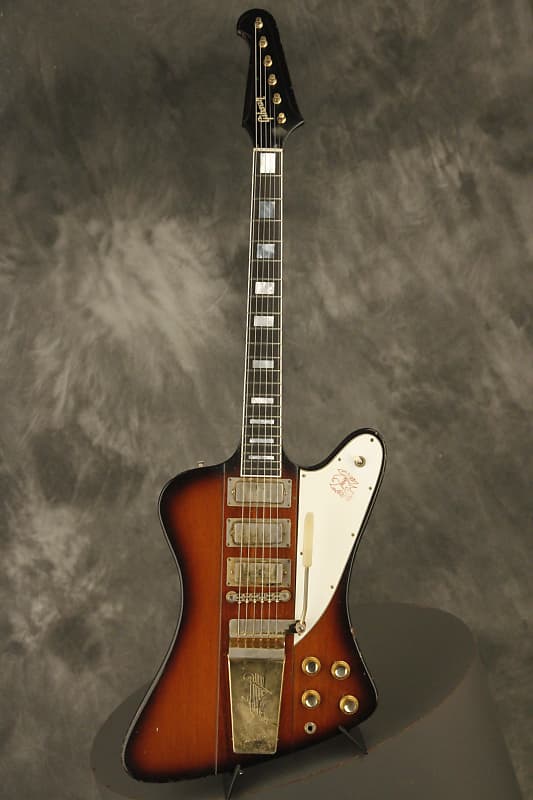
Similar to reverse Firebird I, the reverse VII had three mini-humbuckers and block markers: Bound ebony fingerboard with block markers; three mini-humbuckers; four knobs (two volumes, two tones) and jack on body, three-way selector on pickguard (neck pickup, using neck volume/tone knobs; middle-and-bridge pickups, using bridge volume/tone; bridge pickup, using bridge volume/tone); Tune-o-matic bridge plus separate lyre-logo Deluxe Vibrola tube-arm vibrato; gold-plated metalwork.

After problems with the original Firebirds, Gibson replaced them with a set of four redesigned non-reverse models, and again the Firebird I, with two P-90s, was the least expensive: Non-reverse-shape mahogany body; mahogany set neck; unbound rosewood fingerboard with dot markers, 22 frets; headstock with down-pointing tip and regular tuners; four knobs (volume and tone per pickup) and jack on body, three-way slide-switch on pickguard (later with regular selector); white pickguard with red firebird logo; two P-90 pickups; bridge with integral saddles plus Vibrola tube-arm vibrato; three strap buttons.
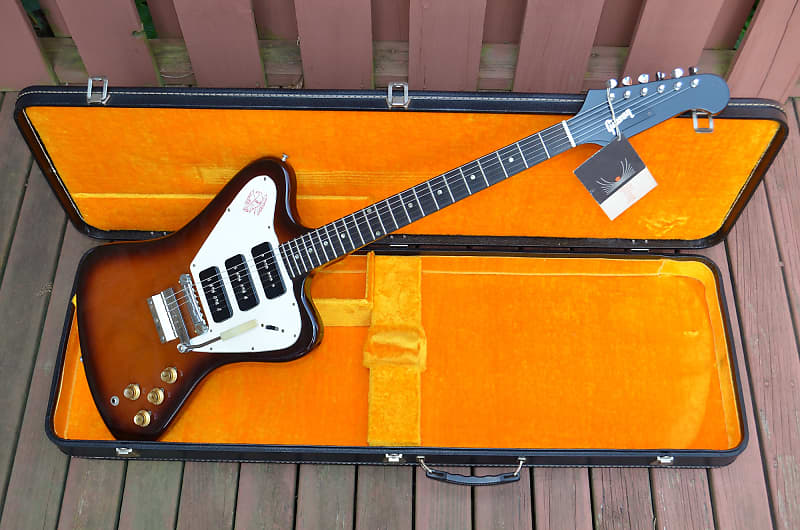
Similar to non-reverse Firebird I, the III had three P-90s: Unbound dot-marker rosewood board; three P-90s; four knobs (two volumes, two tones) and jack on body, three-way selector on pickguard (neck pickup, using neck volume/tone knobs; middle-and-bridge pickups, using bridge volume/tone; bridge pickup, using bridge volume/tone).
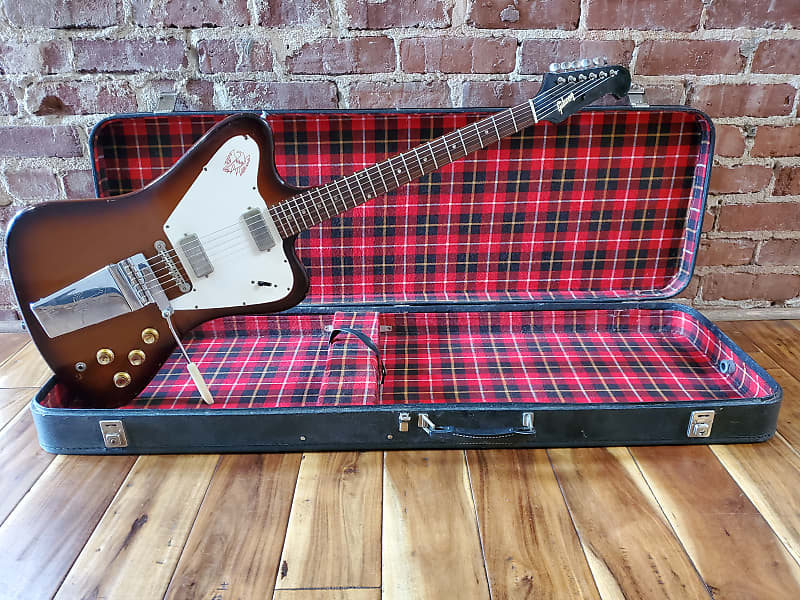
Similar to non-reverse Firebird I, the V had two mini-humbuckers: Unbound dot-marker rosewood board; two plain-cover mini-humbuckers; Tune-o-matic bridge plus separate lyre-logo Deluxe Vibrola tube-arm vibrato.
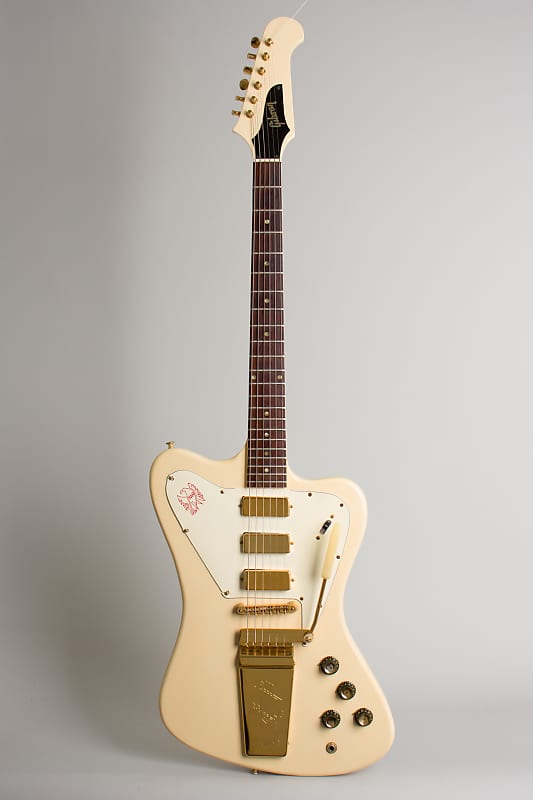
Similar to non-reverse Firebird I, the VII had three mini-humbuckers: Unbound dot-marker rosewood board; three mini-humbuckers; four knobs, jack, three-way selector (neck pickup, using neck volume/tone knobs; middle-and-bridge pickups, using bridge volume/tone; bridge pickup, using bridge volume/tone); Tune-o-matic bridge plus separate lyre-logo Deluxe Vibrola tube-arm vibrato; gold-plated metalwork.
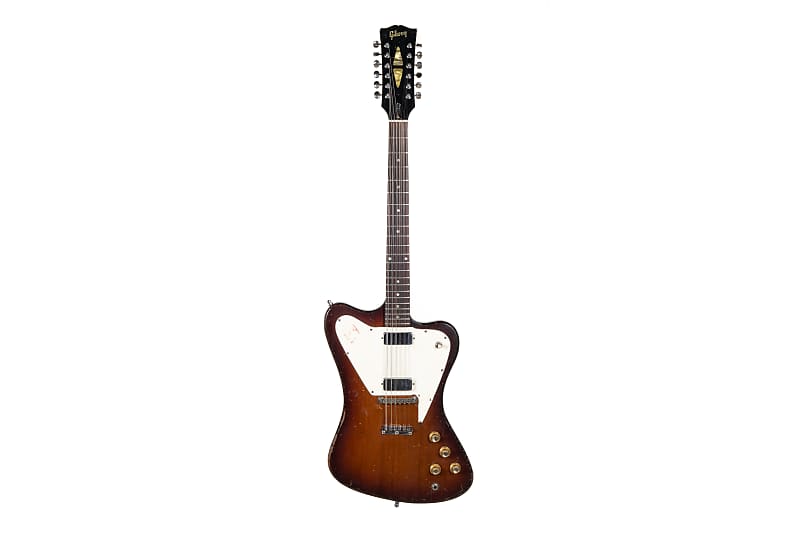
A Firebird belatedly joins the ’60s 12-string fad: Non-reverse style with mahogany body, set neck; unbound dot-marker rosewood board; large regular-style Gibson headstock with six-a-side tuners and split-diamond inlay; two mini-humbuckers; four knobs, jack, three-way selector; white pickguard, red firebird logo; Tune-o-matic bridge plus separate tailpiece.
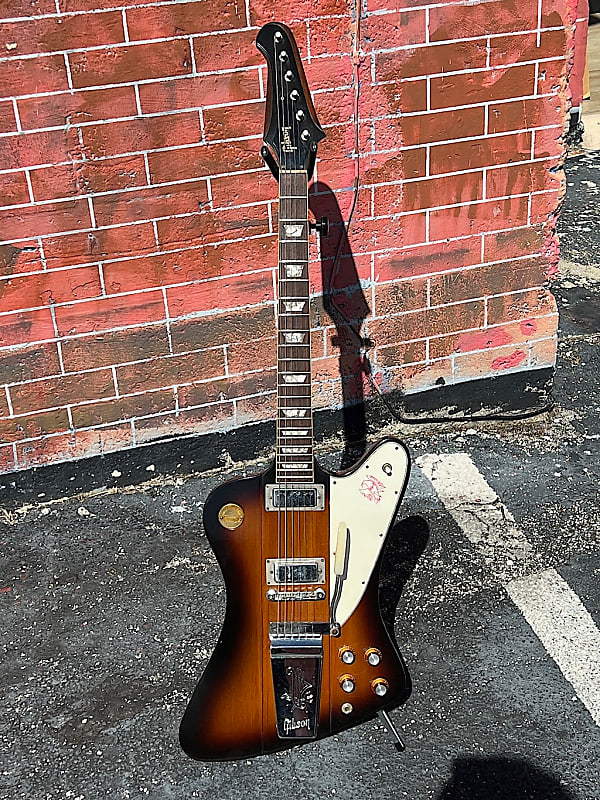
Into the Norlin era, and a shortlived reverse-V-style limited-edition reissue: Reverse-shape mahogany body, two-piece mahogany through-neck; numbered "Limited Edition Model" disc on body; bound rosewood board, crown markers; banjo tuners; two Gibson-logo mini-humbuckers; four knobs, jack, selector; white pickguard (most without firebird logo); Tune-o-matic bridge plus separate Deluxe Vibrola tube-arm vibrato (most with lyre logo).
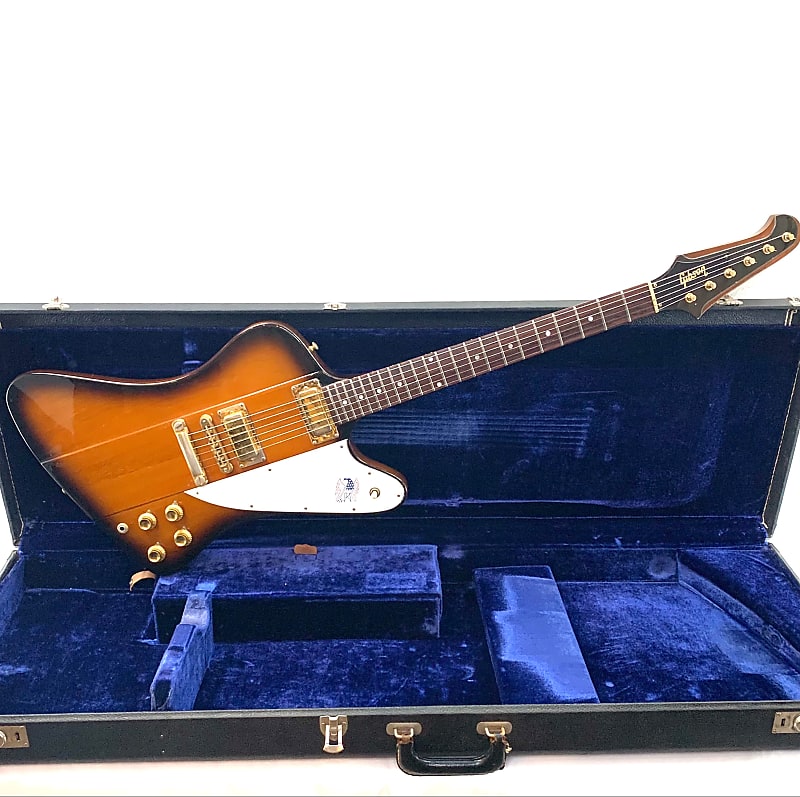
A further reverse-style reissue, introduced to coincide with American bicentennial: Reverse-shape mahogany body, mahogany through-neck; unbound dot-marker rosewood board; banjo tuners; two mini-humbuckers; four knobs, jack, selector; red and blue firebird logo with white stars; Tune-o-matic bridge plus separate stopbar; gold-plated metalwork.
Also: Firebird (1980–81) similar to the ’76 model but with red firebird logo.
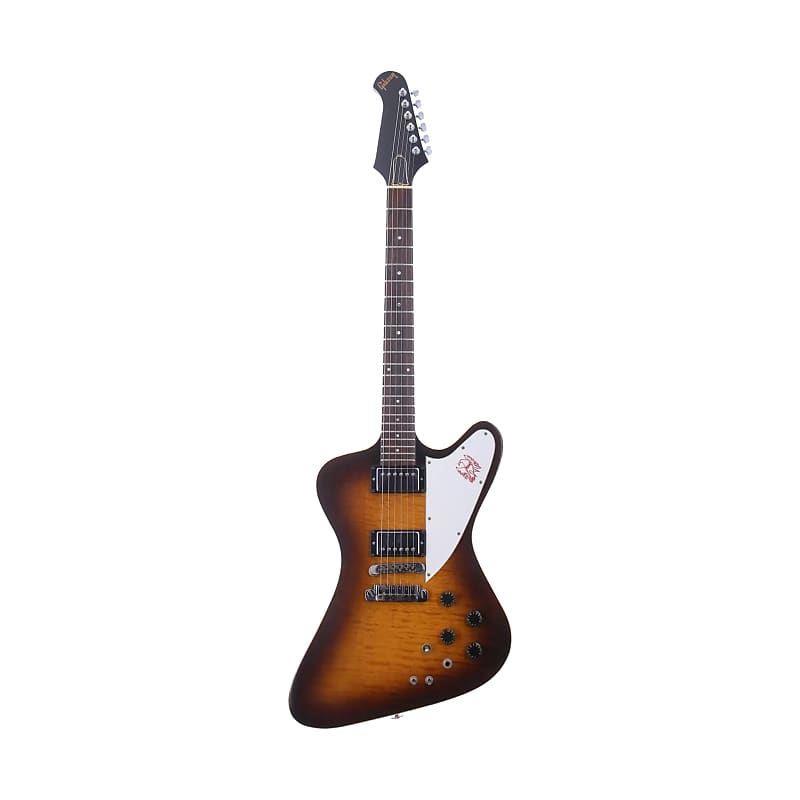
Firebird with RD Artist electronics: Reverse-shape maple body, bound maple top, large backplate for electronics access; three-piece maple set neck; unbound dot-marker rosewood board; headstock with regular tuners; two Series VI humbuckers; controls on body: four knobs (regular volume per pickup, active tone per pickup), jack, regular three-way selector, two two-way mini-switches (regular active/expansion–compression mode; regular active/bright mode); white pickguard, red firebird logo; Tune-o-matic bridge plus separate fine-tune tailpiece.
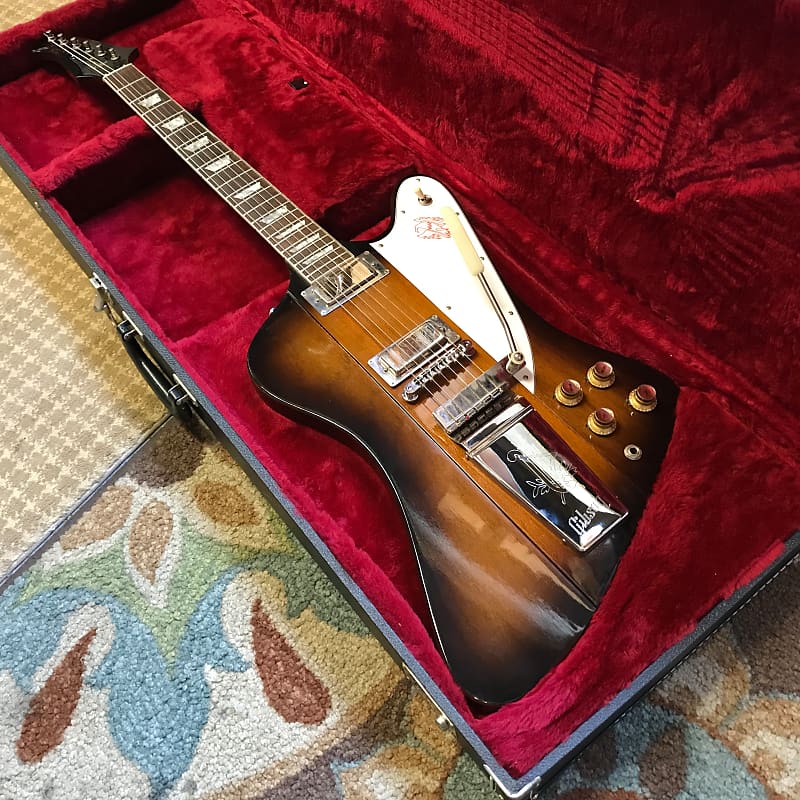
Small run of reissues made at Kalamazoo factory for Guitar Trader retail store in Red Bank, NJ, at a time when Gibson did not offer a reverse V.
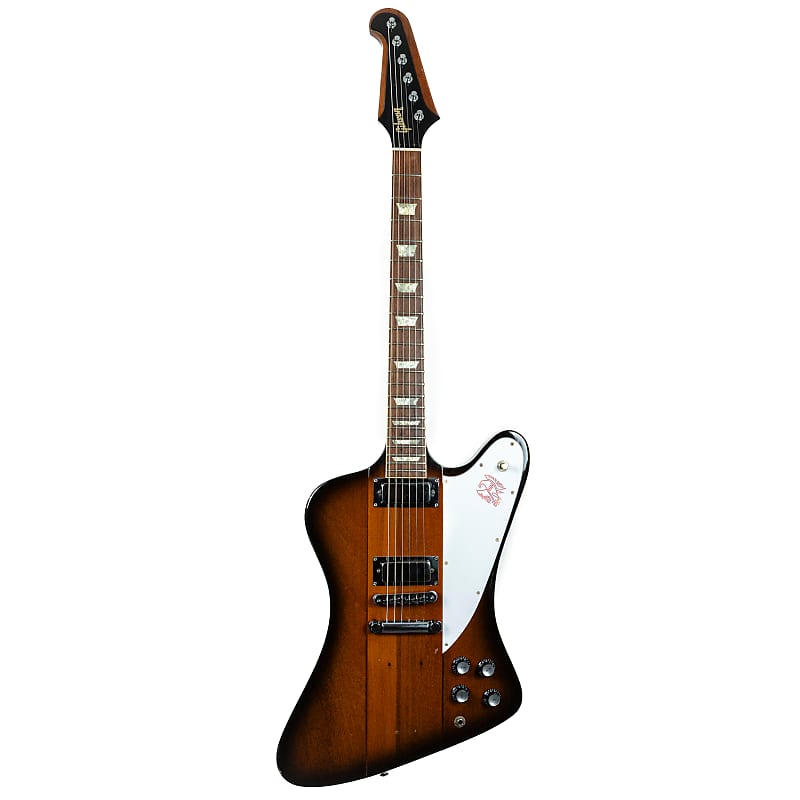
At last, a long-lived reverse V reissue: Reverse-shape mahogany body with multi-piece mahogany/walnut through-neck; bound rosewood fingerboard with crown markers (2014 models have "120th Anniversary" at 12th fret; zero-fret adjustable nut from 2015); banjo-style rear-facing tuners (Steinberger gearless from 2010); two 495R/495T mini-humbuckers; four knobs (volume and tone per pickup) and jack on body, regular three-way selector on pickguard; white pickguard with red firebird logo; Tune-o-matic bridge plus separate stopbar. Known also as Firebird Reissue (1990), Firebird V T (2016–18).
Also: Firebird V Celebrity Series (1991–93) limited edition with black finish, bound ebony fingerboard, black firebird logo and "Celebrity" on pickguard, gold-plated metalwork. Firebird V Zebra Wood/Flame Maple (2007) Guitar Of The Week limited editions with fancy-wood body wings. Firebird HP (2016–18) with contoured heel, G Force auto tuners. Firebird Elite (2018) with granadillo fingerboard, gold-plated metalwork.
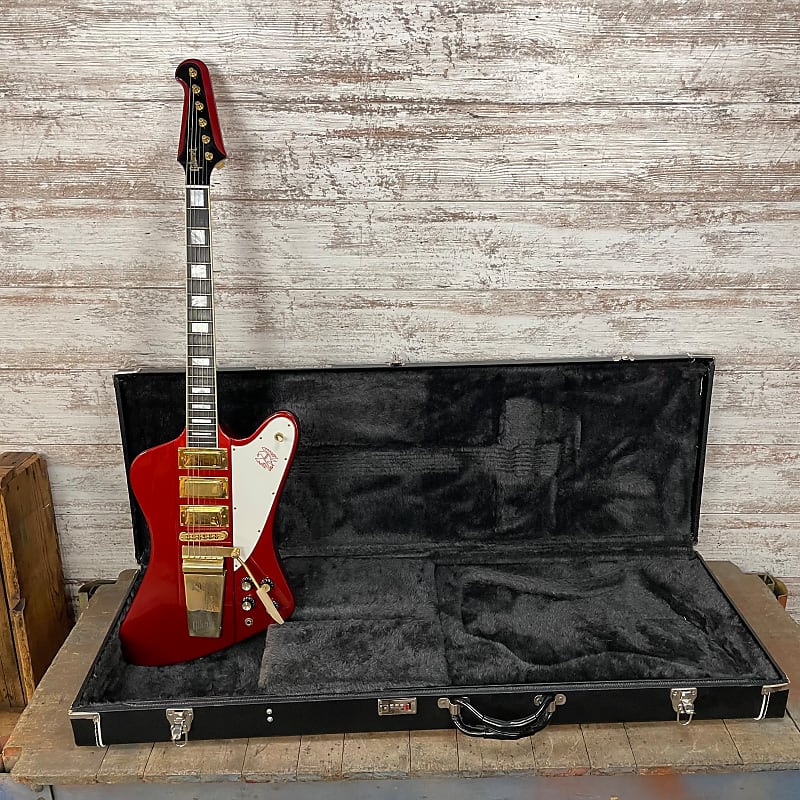
The first USA reverse-VII reissue: Mahogany body with nine-piece mahogany/walnut through-neck or (for metallic finishes) mahogany through-neck; bound ebony fingerboard with block markers; three "high output" mini-humbuckers; four knobs, jack, selector; Tune-o-matic bridge plus separate lyre-logo Vibrola; chrome or (for metallic finishes) gold-plated metalwork.
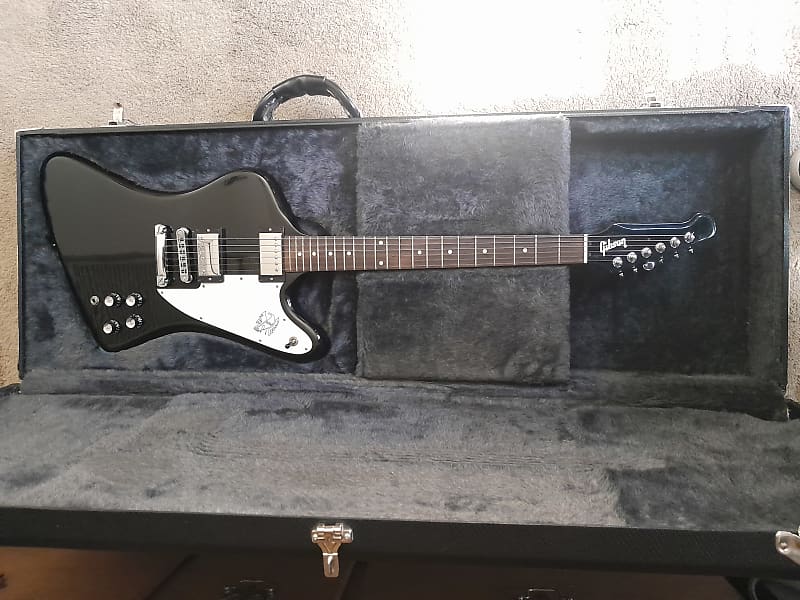
Mid-price Firebird with "tapered" body: Reverse-shape mahogany body and set neck; unbound dot-marker rosewood board; headstock with up-pointing tip and regular tuners; four knobs, jack, selector; firebird logo on pickguard (white or black depending on finish color); two full-size 490R/498T humbuckers; Tune-o-matic bridge plus stopbar; chrome or gold-plated metalwork depending on finish color. See also: Firebird Studio '70s Tribute (2012–13); Firebird Studio (2017–18).
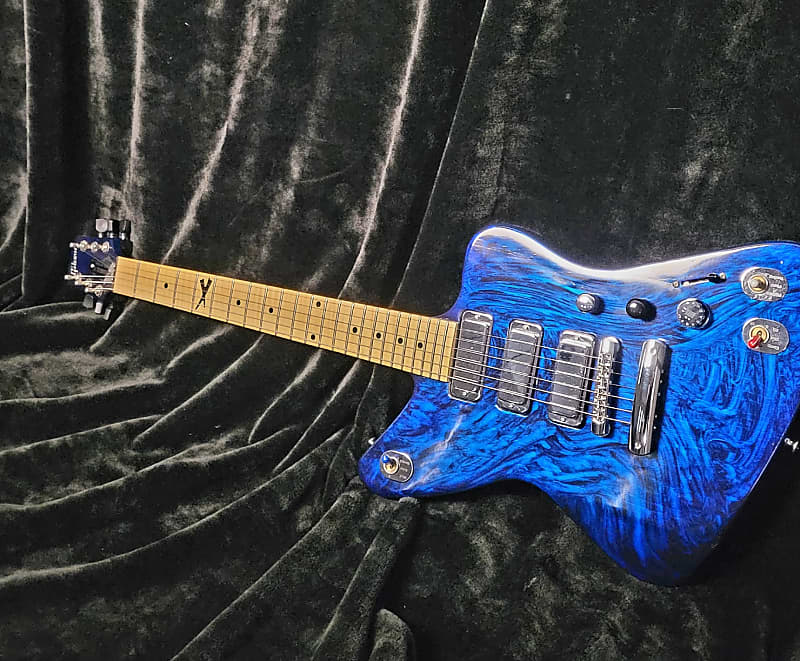
Gibson: "New heights of functionality and usability." Guitarists: "You must be joking." Shortlived electronics-laden take on non-reverse-like Firebird: Blue or red swirl finishes; maple fingerboard, black dot inlays with "X" marker at fifth fret; Robot auto-tuning; three multi-magnet pickups; system to store, play, edit 55 preset tones from onboard effects and models; computer connection via USB; two Bluetooth'd controller pedals; kitchen sink.
Also: Early version Firebird X (2010) with gold-to-red sunburst finish, figured marblewood fingerboard without "X" marker.
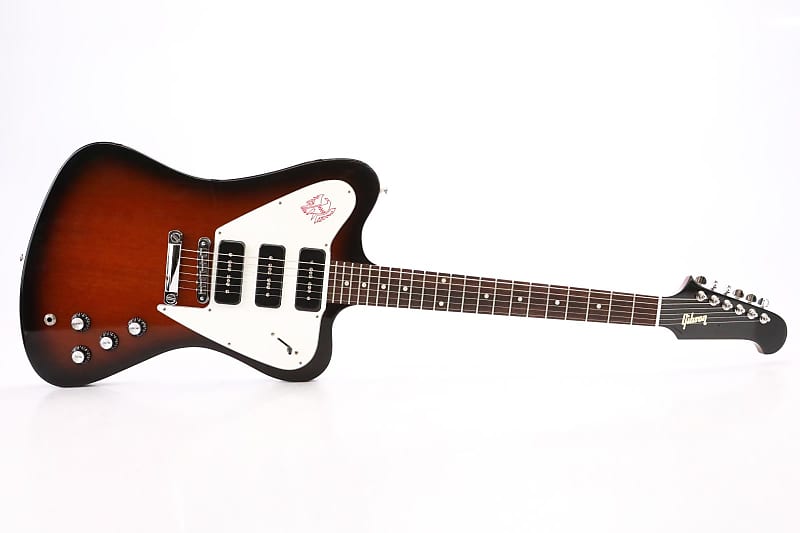
Return of non-reverse style, in medium-price Studio line: Tapered non-reverse-shape mahogany body and set neck; unbound dot-marker rosewood board; headstock with down-pointing tip and regular tuners; four knobs, jack, selector; white pickguard, red firebird logo; three P-90s; Tune-o-matic bridge plus stopbar.
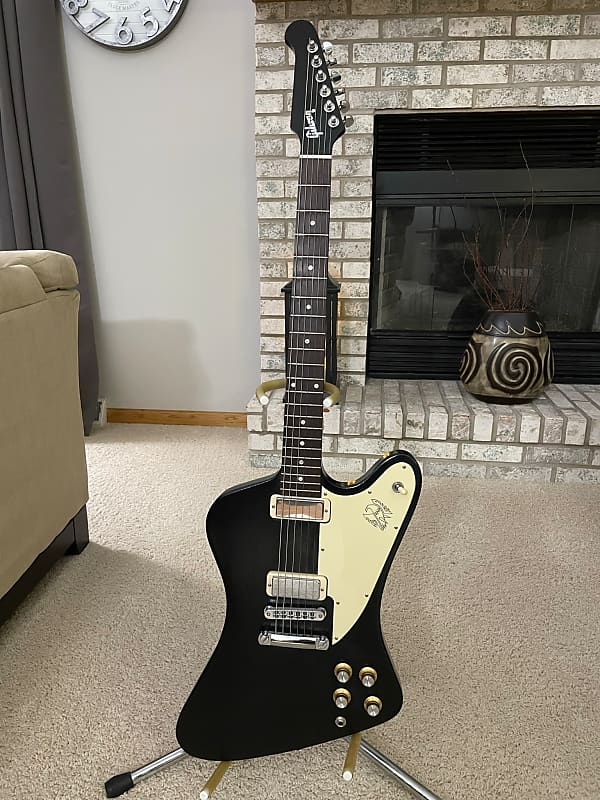
Lower-price stripped-down model: Reverse-shape mahogany body; maple set neck with ’70s-style volute; unbound baked-maple fingerboard with dot markers; headstock with regular tuners; four knobs, jack, selector; firebird logo on pickguard (white or black depending on finish color); two mini-humbuckers; Tune-o-matic bridge plus stopbar.
Also: Firebird Tribute (2018–19) similar to ’70s Tribute but mahogany neck, rosewood board.

Birthday edition: Gold-themed finish and metalwork plating; bound crown-marker rosewood board; Steinberger gearless tuners; two mini-humbuckers; black pickguard with gold firebird logo and "50th Anniversary 1963–2013"; Tune-o-matic bridge plus stopbar.
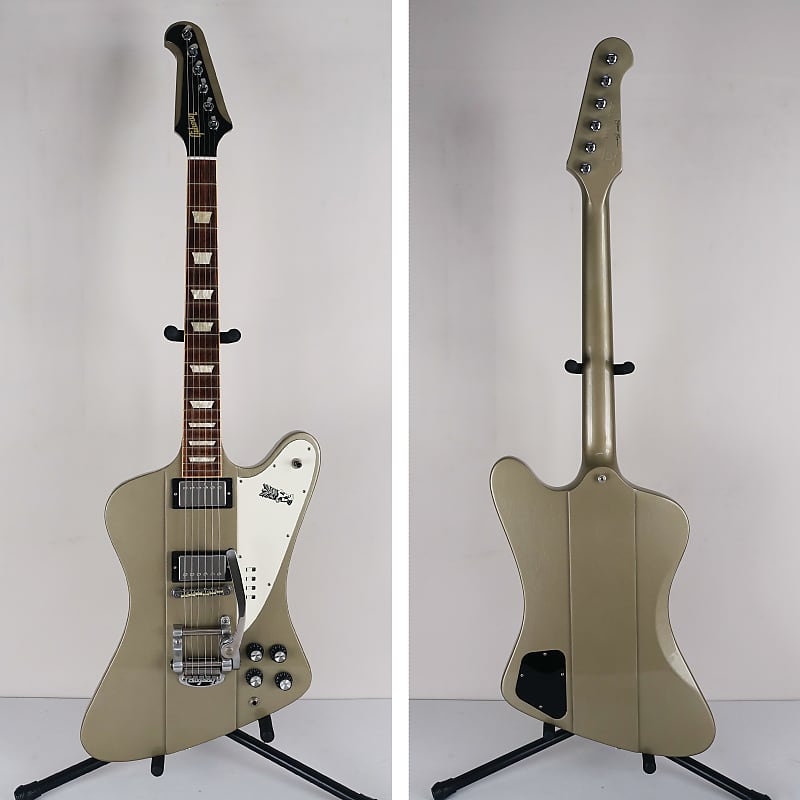
First USA signature Firebird: Reverse-shape mahogany body with multi-piece mahogany through-neck; bound rosewood fingerboard with crown markers; rear-facing Steinberger gearless tuners; two ’57 Classic full-size humbuckers; four knobs and jack on body, regular three-way selector on pickguard, four slide switches on pickguard (neck coil-split; bridge coil-split; reverse wound and polarity when selector centred; bridge direct to jack); white pickguard with Tiki logo; locking Tune-o-matic bridge plus separate Bigsby vibrato with string loader.
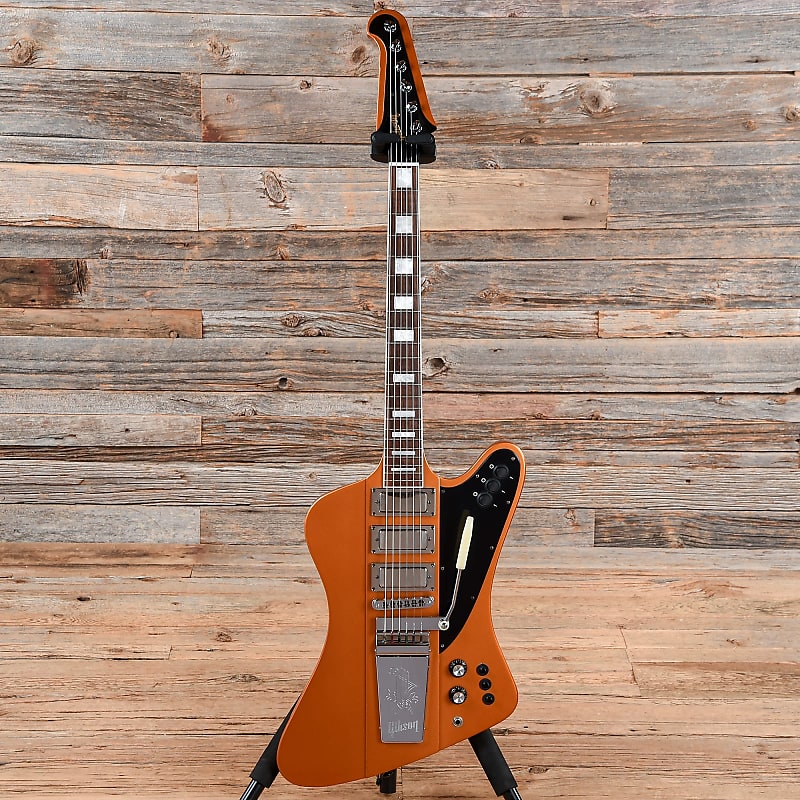
Another USA signature Firebird: Reverse-shape mahogany body with nine-piece mahogany/walnut through-neck; bound rosewood fingerboard with block markers; rear-facing Steinberger gearless tuners; three Skunk Baxter Alnico V mini-humbuckers; two knobs (master volume and tone), three switches (coil-split per pickup), jack on body; three switches on pickguard (pickups on/off); black pickguard; Tune-o-matic bridge plus separate lyre-logo Vibrola.
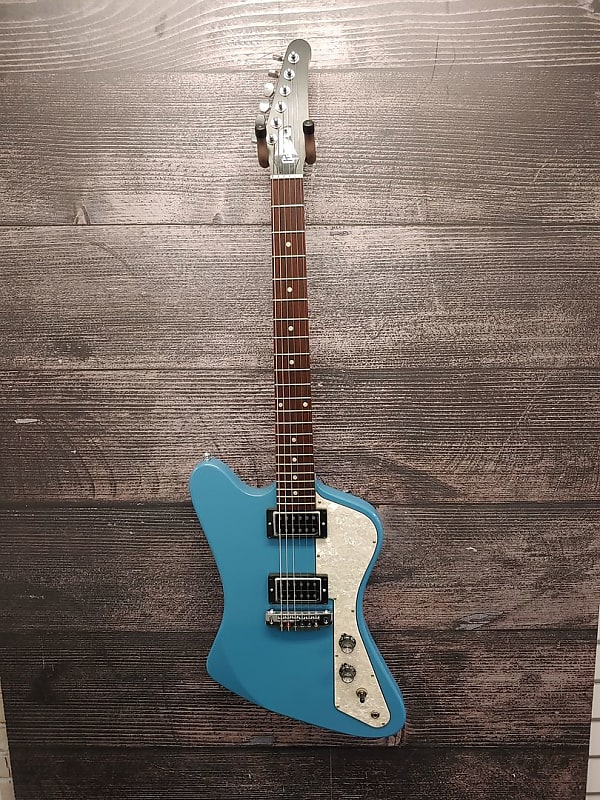
Budget non-reverse model: Revised contoured non-reverse-shape poplar body; maple set neck; unbound dot-marker rosewood board; slim take on non-reverse Firebird headstock, regular tuners; two knobs, jack, selector; two full-size DS-C humbuckers; adjustable wrapover bridge/tailpiece.
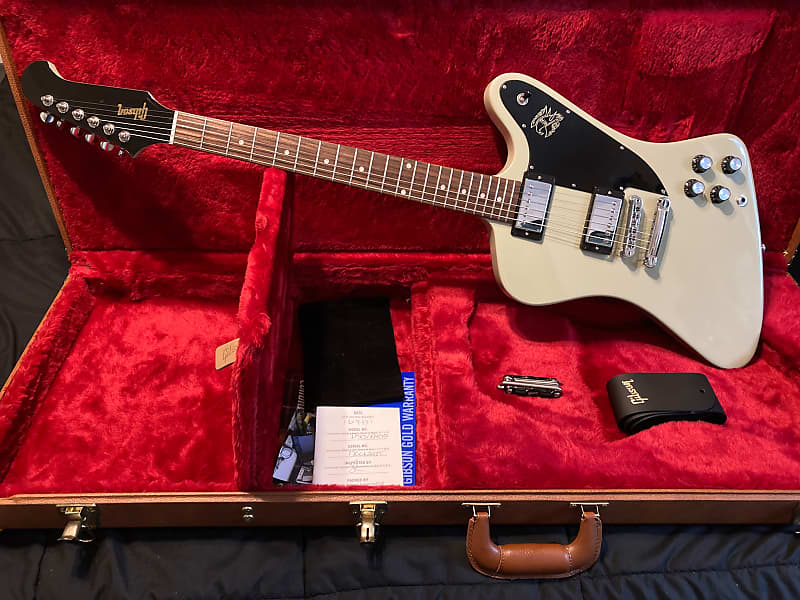
Revised take on earlier Studio: Reverse-shape mahogany body and set neck; torrefied granadillo fingerboard with dot markers; headstock with down-pointing tip and regular tuners; four knobs, jack, selector; firebird logo on black pickguard; two P-90s; Tune-o-matic bridge plus stopbar. See also: Firebird Studio (2004–08); Firebird Studio '70s Tribute (2012–13).
Also: Firebird Studio T (2017–18) similar to Studio but rosewood board, two 496R/496T full-size humbuckers. Firebird Studio HP (2017–18) similar to Studio but rosewood board, zero fret adjustable nut, two 496R/500T full-size humbuckers, G Force auto-tuning.
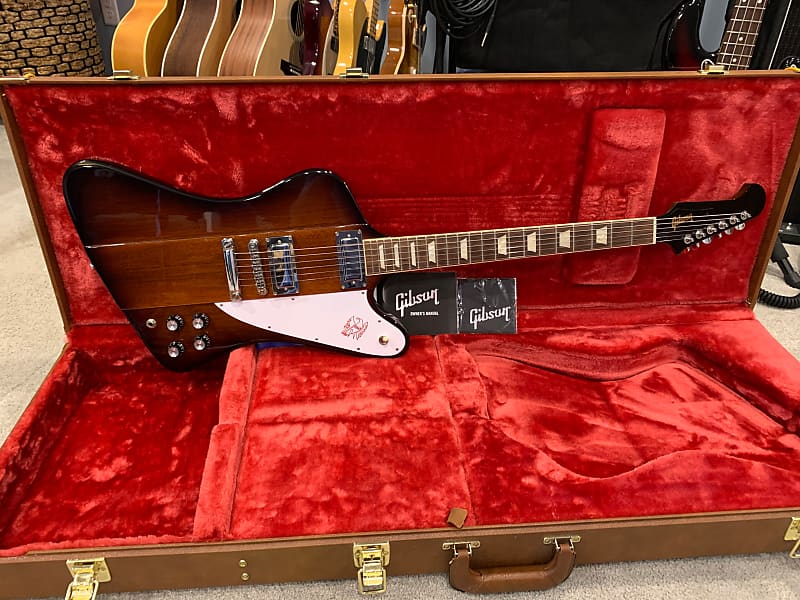
Under a new owner, Gibson discontinued the crowded Firebird lines and positioned one classic reverse Firebird V in its Original Series: mahogany body and nine-piece through-neck; crown markers in bound rosewood board; two Firebird Alnico V mini-humbuckers; Tune-o-matic and stopbar; white guard with red firebird logo.
About the author: Tony Bacon writes about musical instruments, musicians, and music. His books include Flying V/Explorer/Firebird and Electric Guitars: Design & Invention. Tony lives in Bristol, England. More info at tonybacon.co.uk.
